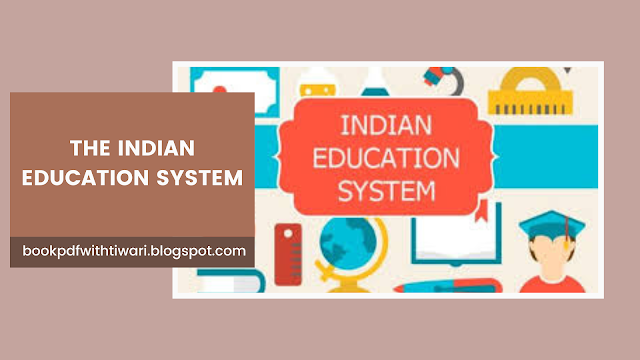The education system in India has always been a topic of debate and discussion. On one hand, it is known for producing some of the world's most talented and successful individuals in various fields. On the other hand, it is plagued by numerous challenges and complexities that hinder its progress and effectiveness.
In this blog, we will critically analyze the Indian education system and explore its complexities and challenges. We will examine various aspects of the system, including access to education, quality of education, curriculum, teaching methods, and examination systems. We will also look at the socio-economic factors that impact education in India, such as poverty, gender inequality, and caste discrimination.
By the end of this blog, readers will have a better understanding of the complexities and challenges faced by the Indian education system, and the need for reforms to create a more inclusive, equitable, and effective system for all.
The Indian Education System Points
1. Inequality in access to education: Despite the Right to Education Act, many children in India still do not have access to quality education due to various factors such as poverty, lack of infrastructure, and inadequate facilities in schools.
2. Quality of education: The quality of education in India is often criticized for being outdated, rote-based, and not preparing students for the demands of the 21st century. This results in a mismatch between the skills and knowledge required by the job market and those possessed by graduates.
3. Curriculum: The curriculum in India is often criticized for being too theoretical and not emphasizing practical skills, critical thinking, and creativity. There is a need to revise the curriculum to make it more relevant and engaging for students.
4. Teaching methods: The teaching methods in India are often criticized for being teacher-centered and not encouraging active learning and student participation. There is a need to adopt more student-centered and innovative teaching methods to promote deeper learning and skill development.
5. Examination systems: The examination system in India is often criticized for being too focused on rote learning and memorization, with little emphasis on critical thinking and problem-solving skills. This results in a high-stress environment for students and does not prepare them for the challenges of the real world.
6. Socio-economic factors: Socio-economic factors such as poverty, gender inequality, and caste discrimination play a significant role in education in India. Children from marginalized communities often face barriers to access quality education, and there is a need to address these issues to create a more equitable education system.
7. Reforms needed: There is a need for comprehensive reforms in the Indian education system to address the challenges and complexities. This includes revising the curriculum, improving teacher training, promoting student-centered learning, and adopting technology-based learning solutions. Additionally, there is a need to address the socio-economic factors that impact education and create a more inclusive and equitable system for all.
8. Lack of funding: The Indian education system suffers from a lack of funding, which affects the quality of infrastructure, teacher training, and the overall effectiveness of the system. The government needs to increase investment in education to create a more sustainable and effective system.
9. Brain drain: India has a high rate of students leaving the country to pursue higher education and better job opportunities abroad. This brain drain affects the country's progress and development and highlights the need for improvements in the education system.
10. Vocational education: The Indian education system lacks adequate emphasis on vocational education, which is crucial for developing skills and employability. There is a need to promote vocational education and provide opportunities for skill development.
11. Standardized testing: The emphasis on standardized testing in India has led to a focus on rote learning and memorization rather than skill development and critical thinking. There is a need to rethink the importance of standardized testing and adopt more flexible and innovative assessment methods.
12. Teacher shortage: India faces a shortage of qualified and trained teachers, particularly in rural areas. There is a need to address this shortage and improve teacher training and development programs to ensure a more effective and sustainable education system.
The Indian Education System Conclusion
The Indian Education System FAQs
What is the structure of the Indian education system?
The Indian education system comprises three levels: primary, secondary, and higher education. Primary education starts from age six and lasts for five years, followed by five years of secondary education. After secondary education, students can choose to pursue higher education, which includes undergraduate and postgraduate programs.
What are the challenges facing the Indian education system?
The Indian education system faces several challenges, including inequality in access to education, the quality of education, outdated curriculum, teacher training, socio-economic factors, and inadequate funding.
What is the role of technology in the Indian education system?
Technology has played a significant role in the Indian education system, particularly in recent years. With the increased use of online learning platforms, digital textbooks, and virtual classrooms, technology has improved access to education and created new opportunities for students to learn.
What is the status of vocational education in India?
Vocational education has traditionally been given less importance in India compared to academic education. However, in recent years, there has been a growing emphasis on vocational education, and the government has launched several initiatives to promote skill development and vocational training.
How does the Indian education system compare to other countries?
The Indian education system has made significant progress in recent years, particularly in terms of access to education. However, in terms of quality and outcomes, it still lags behind other countries. India ranks 116th out of 190 countries in the Education Development Index, which is a measure of the quality and accessibility of education.
What is the role of the government in the Indian education system?
The government plays a significant role in the Indian education system, particularly in providing access to education and setting policies and regulations. The government also provides funding for education and is responsible for implementing reforms to improve the quality and effectiveness of the education system.
What is the importance of teacher training in the Indian education system?
Teacher training is critical to the success of the Indian education system. Teachers play a crucial role in shaping the learning outcomes of students, and effective teacher training can improve the quality of education and promote better learning outcomes.
What is the future of the Indian education system?
The Indian education system has the potential to be a world-class system that prepares students for success in the 21st century. The future of the education system depends on addressing the challenges and complexities, including revising the curriculum, improving teacher training, promoting student-centered learning, and adopting technology-based learning solutions. Additionally, there is a need to address the socio-economic factors that impact education and create a more inclusive and equitable system for all.
How to improve education system in india?
Revising the curriculum to make it more relevant to the needs of the modern world and promote critical thinking and problem-solving skills. Adopting student-centered teaching methods that promote active learning and engagement.
What is education system in india?
The Indian education system is primarily administered by the government, which is responsible for setting policies, regulations, and standards. The system is also supported by private schools and colleges, which operate alongside government-run institutions.
How is the education system in india?
The education system in India is structured into three levels: primary, secondary, and higher education. Primary education starts from age six and lasts for five years, followed by five years of secondary education. After secondary education, students can choose to pursue higher education, which includes undergraduate and postgraduate programs.
How to improve education system in india essay?
The education system in India is vast and complex, with numerous challenges that hinder the delivery of quality education to all students. However, there are several ways in which the education system can be improved to provide better opportunities for students to learn and grow.



